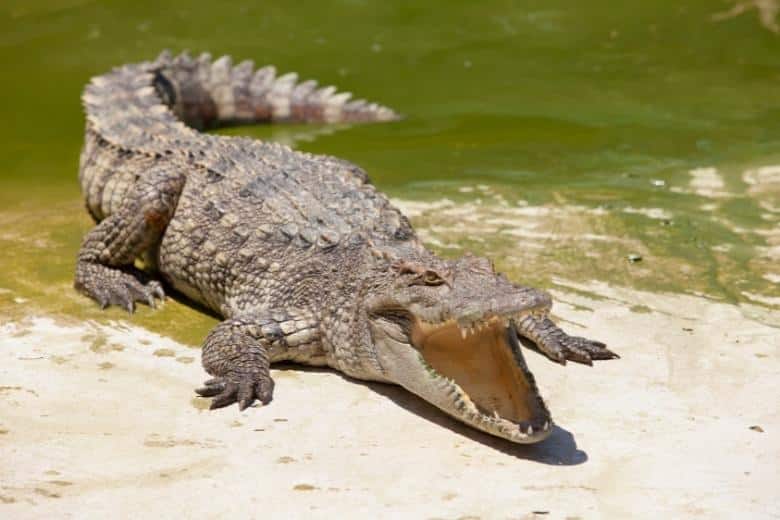Salamanders, belonging to the order Caudata, are amphibians characterized by their slender bodies, moist skin, and long tails. They are found in a wide range of habitats, including forests, wetlands, and even underground. Salamanders play essential roles in ecosystems, contributing to nutrient cycling and serving as indicators of environmental health.
Understanding the predator-prey relationships involving salamanders is crucial for comprehending the intricate dynamics of ecosystems. By examining the predators that target salamanders, we gain valuable insights into the delicate balance of nature.
Types of Predators
Salamanders face predation from various types of animals, including mammals, birds, reptiles, and even other amphibians. Each group has developed unique adaptations and hunting strategies to capture these elusive amphibians.
Mammalian Predators
Mammals form a diverse group of predators that target salamanders. Small mammals like shrews and mice are known to seize these unsuspecting amphibians. Additionally, larger predators such as raccoons and skunks opportunistically prey on salamanders when encountered.
Mammalian predators often rely on their agility, acute senses, and dexterity to capture salamanders. With their keen sense of smell and excellent eyesight, they can track down these elusive creatures in their hiding places.
Avian Predators
Birds, with their aerial prowess and sharp beaks, also make formidable predators of salamanders. Various species of birds, including herons, kingfishers, and certain waterfowl, are known to consume salamanders. These avian hunters frequent wetland habitats, where salamanders are abundant.
Birds employ different hunting techniques, such as quick strikes or patient waiting, to catch salamanders. Their sharp beaks allow them to snatch their prey with precision, leaving little chance for escape.
Reptilian Predators
Reptiles, including snakes and larger lizards, are another group of predators that salamanders must evade. Snakes, being stealthy and capable of swallowing prey whole, are particularly efficient predators of salamanders. Lizards, on the other hand, may rely on speed and agility to capture their prey.
The cold-blooded nature of reptiles enables them to patiently lie in wait for salamanders to pass by, making them formidable hunters. Some reptiles possess venom or powerful jaws that aid in subduing and consuming salamanders.
Amphibian Predators
While it may seem counterintuitive, some amphibians themselves pose a threat to salamanders. Certain larger amphibians, like frogs and other salamander species, have been observed preying upon smaller salamanders. This highlights the complex dynamics within the amphibian community.
Predation Impact on Salamander Populations
The predation of salamanders has important implications for their populations and overall ecosystem dynamics. Predators play a crucial role in regulating salamander populations, preventing unchecked growth and maintaining balance within ecosystems.
However, excessive predation can lead to a decline in salamander numbers, potentially disrupting the delicate balance of ecosystems. Understanding these dynamics is essential for conservation efforts aimed at preserving salamanders and their habitats.
Defense Mechanisms of Salamanders
Salamanders have evolved a range of defense mechanisms to increase their chances of survival against predators. These strategies include camouflage, toxicity, and regenerative abilities.
Camouflage allows salamanders to blend into their surroundings, making it difficult for predators to detect them. Some salamanders even possess toxic skin secretions that deter predators from attacking. Lastly, salamanders’ remarkable ability to regenerate lost body parts provides them with a unique advantage in evading predators.
Human Impact on Salamander Predators
Human activities can have indirect effects on salamander populations by impacting their predators. Habitat destruction, pollution, and climate change all contribute to altering ecosystems and, subsequently, predator-prey dynamics. For instance, deforestation reduces suitable habitats for mammalian predators, potentially affecting salamander populations.
Conservation Efforts
To ensure the continued survival of salamanders and their predators, conservation efforts are paramount. Protecting and restoring natural habitats is essential, as it provides both salamanders and their predators with suitable environments.
Additionally, raising awareness about the ecological importance of salamanders and promoting responsible land use practices can contribute to their conservation. By fostering a better understanding of predator-prey relationships and their intricate roles, we can work towards a more harmonious coexistence.
FAQs
1. Do salamanders have any defense mechanisms against predators?
Yes, salamanders have various defense mechanisms, including camouflage, toxic skin secretions, and the ability to regenerate lost body parts.
2. Can salamanders prey on each other?
Yes, certain larger amphibians, such as frogs and other salamander species, have been observed preying upon smaller salamanders.
3. How do avian predators catch salamanders?
Birds use their aerial prowess and sharp beaks to capture salamanders. They employ different hunting techniques, such as quick strikes or patient waiting, to catch their prey.
4. What impact does predation have on salamander populations?
Predation helps regulate salamander populations and maintain balance within ecosystems. However, excessive predation can lead to a decline in salamander numbers and disrupt ecosystem dynamics.
5. How can humans contribute to salamander conservation?
Humans can contribute to salamander conservation by protecting and restoring natural habitats, raising awareness about their ecological importance, and promoting responsible land use practices.
Conclusion
Salamanders, although fascinating creatures in their own right, must contend with a variety of predators across different taxonomic groups. From mammals and birds to reptiles and even other amphibians, salamanders face constant challenges in their struggle for survival. Understanding these predator-prey relationships and their ecological significance is crucial for preserving these remarkable amphibians and maintaining the delicate balance of ecosystems they inhabit.

